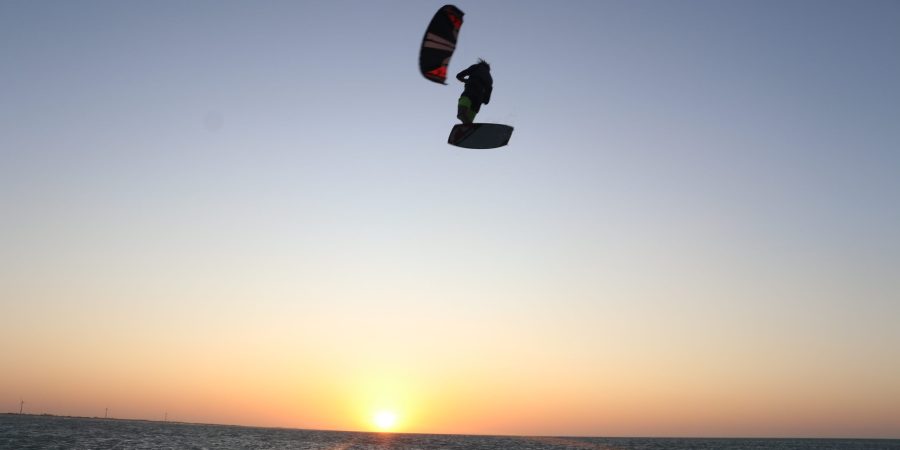Kitesurfing isn’t just about cruising along the waves—it’s an art form that allows riders to push the limits of what’s possible on water. In this blog post, we’ll delve into the world of kitesurfing tricks. Whether you’re just starting or looking to take your skills to the next level, we’ll break down various maneuvers, from basic jumps to advanced freestyle tricks. Get ready to elevate your kitesurfing game and impress fellow riders with your style and technique.
Learning kitesurfing tricks can be an exciting and challenging endeavor. Here are some steps to help you approach learning kitesurfing tricks:
1. Master the basics: Before attempting tricks, ensure you have a solid foundation in kitesurfing. This includes proficiency in kite control, board skills, riding in different conditions, and understanding safety procedures. Practice riding comfortably in both directions, maintaining speed and control, and executing smooth turns.
2. Choose the right trick: Start with tricks suitable for your skill level and progression. Some common tricks for beginners include jumps, grabs, transitions (switching from heel-side to toe-side or vice versa), and basic rotations. As you gain more experience, you can progress to more advanced tricks such as kite loops, handle passes, and unhooked maneuvers.
3. Seek guidance from an instructor or experienced riders: Learning from someone with experience can greatly accelerate your progress and ensure safety. Consider taking lessons with a qualified instructor or joining a kitesurfing clinic or camp where you can receive guidance specific to tricks. They can provide valuable tips, correct your technique, and offer advice on equipment and conditions.
4. Break down the trick: Analyze the trick you want to learn and break it down into its components. Understand the kite and board movements, body positioning, timing, and weight distribution required for the trick. Visualize each step and practice them individually before attempting the complete trick. It’s essential to develop muscle memory and coordination for each element.
5. Practice on flat water: Start practicing tricks in flat water conditions, such as a calm lagoon or a spot with minimal waves and obstacles. Flat water allows for a controlled environment where you can focus on the trick without distractions. It also provides a safer learning environment.
6. Progress gradually: Begin with the foundational elements of the trick and gradually increase the difficulty level. For example, start with smaller jumps before attempting bigger air tricks. Focus on mastering one trick before moving on to the next. Developing a strong foundation in the basics will make learning more advanced tricks easier.
7. Film and analyze: Record your sessions and review the footage to identify areas for improvement. Analyze your technique, body positioning, and timing. Compare your attempts to videos of professionals executing the trick to understand the proper form. This self-analysis can help you identify areas to work on and make adjustments.
8. Persistence and patience: Learning kitesurfing tricks takes time, practice, and perseverance. Some tricks may come more naturally to you, while others may require more effort. Be patient with yourself, celebrate small achievements, and don’t get discouraged by setbacks. Keep practicing consistently, and over time, you’ll see progress.
Remember to always prioritize safety while attempting tricks. Be aware of your limits, assess the conditions, and use appropriate safety equipment. Learning tricks should be a gradual and enjoyable process, so enjoy the journey and have fun while expanding your kitesurfing repertoire.


Laat een antwoord achter